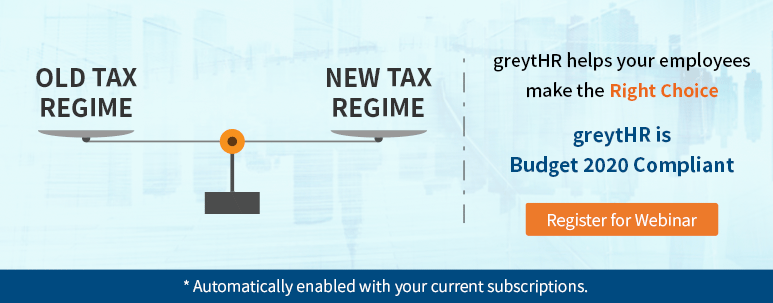February & March is that dreaded period of the financial year when one must finish submitting all the proofs of investments and surrender to the harsh reality of one's tax liabilities. Every year, we all eagerly await the Union Budget from the Government of India to understand what personal tax changes have been proposed for the salaried class and evaluate the changes in our tax liabilities in the coming financial year.
New Vs. Old
This year, the Union Budget has announced a unique dual tax regime. It has proposed a new optional regime in addition to the existing old regime. It is mandatory for an individual to now choose one of the two regimes depending on the current salary bracket, the exemptions and deductions sought & availed by him/her. Since all of this is a first of its kind, it has raised its own set of questions and unknown fears in the minds of the average taxpayers.
'MONEY' has always been a reason for stress, and the tax filing season always acts as a catalyst, bringing to the centre stage both the taxpaying employees and their employers who want to help them plan their taxes in the best possible manner.
'Paradox- of- choice.'
While all employees will now genuinely ponder over these multiple calculations and comparisons to figure out which regime would suit them the best, the organizations, in turn, are equally worried about the additional hassles of customized tax filing for each employee. Further, in these challenging times, when every organization is coping with remote working due to the COVID-19 pandemic & lockdown, the ability to guide and recommend solutions to their employees while fulfilling 100 % compliance levels becomes more challenging.
Every complex problem often has a solution, as well.
GreytHR has developed an additional feature that resolves the dual tax regime challenges for the organization and its employees. It enables the employees to make a well-informed decision about choosing the right regime without having to do the manual calculations using an automated tool through its unique Dual Tax Regime Support Module.
With this NEW super feature, one can now:
- Choose and either migrate from the old tax regime to the new one quickly & effortlessly or stay with the old one depending on the best tax saving option for them.
- Select the default regime for employees without any declaration.
- Calculate and process income tax accurately based on the selected regime.
- Review the IT statement once the declarations are considered.
- Quickly and easily validate & verify with reports.
greytHR has all bases covered.
We have not only thought through all the tax complications arising out of this extensively but have come up with this all-new, easy-to-use feature- our Dual Tax Regime Support. This feature undoubtedly makes tax declarations straightforward and easy for the organisation and its employees.










